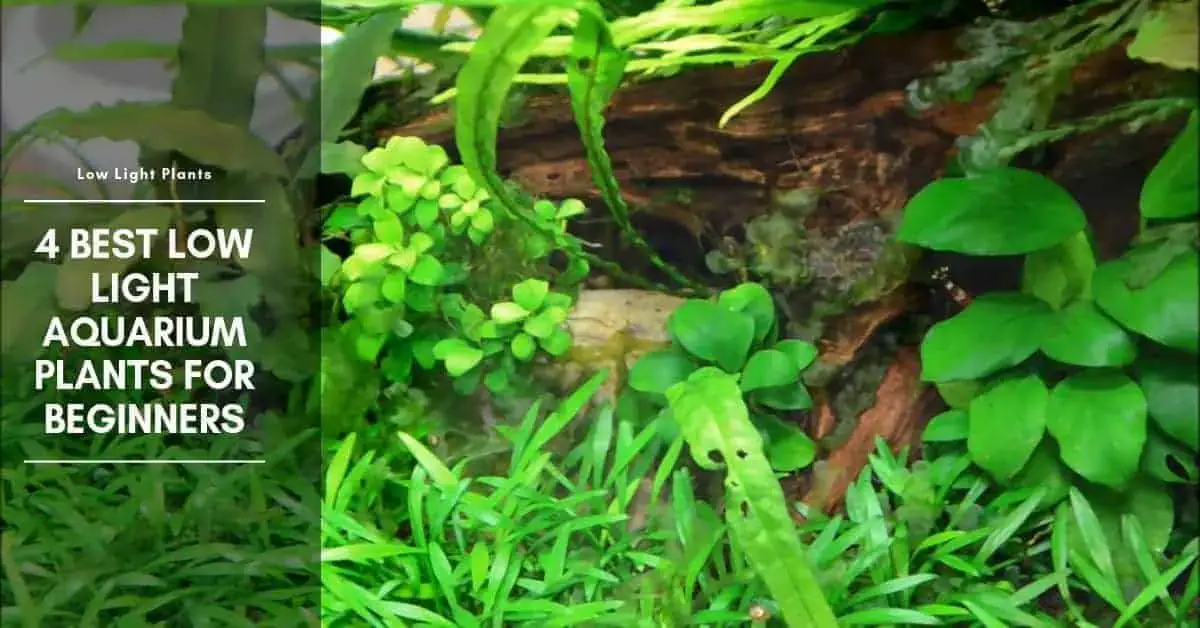Our list for low light aquarium plants can be beautiful, moreover, these plants are very easy to maintain and no Co2 needed. Having an aquarium is an engaging and rewarding task. While it gives you the chance to nurture life, it also helps you recreate nature’s beauty.
If you’ve made up your mind to add plants to your aquarium,think variety. As they say, variety is the spice of life and there are various aquarium plants to choose from. But, first what are these plants?
These plants are very easy to maintain which earned them the name, easy plants. Unlike other aquarium plants, these plants serve as hideouts for fishes.
Besides thriving in low tech aquarium, they do not need carbon dioxide to survive. But, how does a beginner choose the best plants and care for them?
Picking these plants is very easy when you have a list of the best plants. Before we get to that, let’s talk about how you can increase the growth of these delicate plants.
Preparatory items that promote plant growth
Liquid fertilizer – fertilizers support aquarium plants that do not root in the substrate. Also, these plants can manage without any external factors. So, add only a little quantity of fertilizer to your aquarium.
Root tabs – To improve nutrient level, place this nutrient disc under aquarium substrates
What plants can grow in low light aquarium?
The list contains plants that are easy to maintain either by a beginner or an expert. So, let’s meet the plants and later we would look at the pros and cons of these plants.
What are good low light aquarium plants?
Java moss (Vesicularia dubyana)
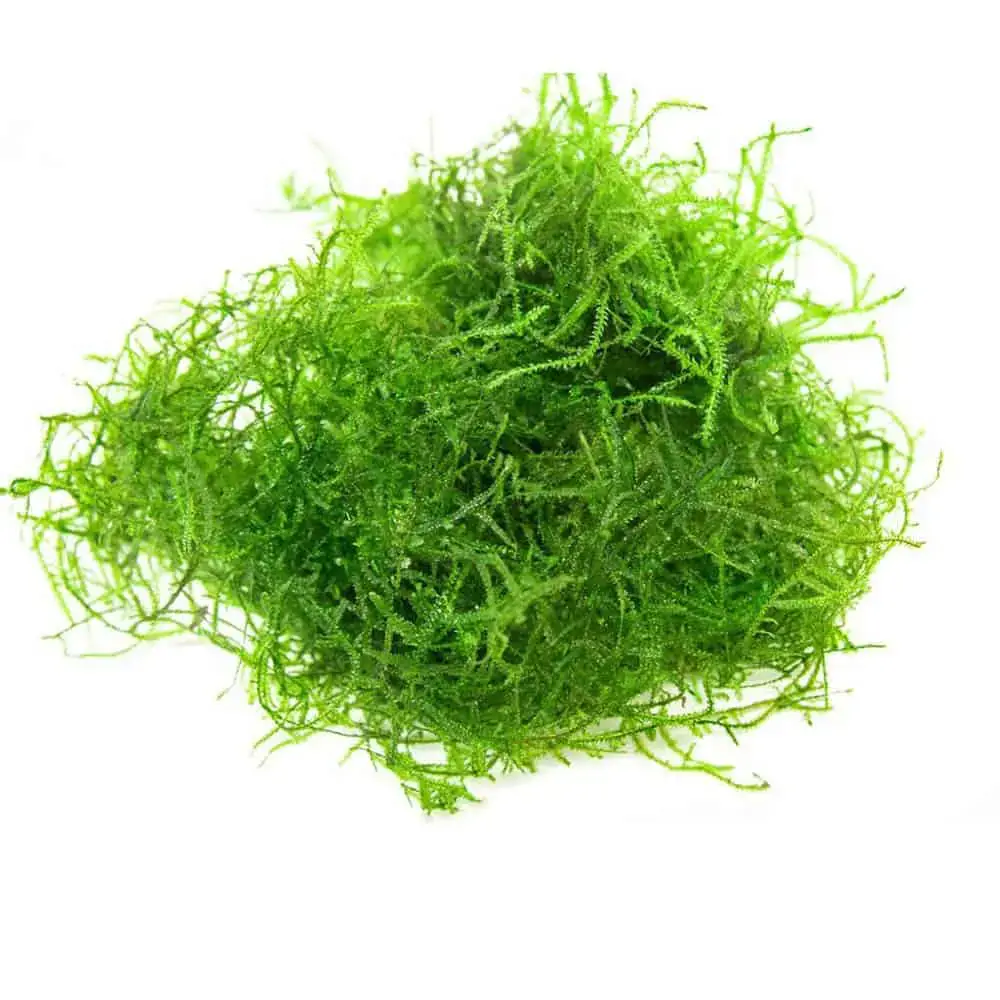
| ORIGINS | Parts of southern Asia, ranging from India through the Malay Peninsula to Java. |
| SIZE | Forms strands up to 4 in (10 cm) long. |
| WATER | Temperature 72–77°F (22–25°C); soft (50–100 mg/l) and acidic to neutral (pH 6.5–7.0). |
| PROPAGATION | Break off pieces of the moss and fix them in position as required. |
By far, this is one of the most common aquarium plants that grow on trees and rocks. A Java moss has tiny oval leaves and filters nutrients in the aquarium through its leaves. Also, it grows slowly in low light plants aquarium and can endure harsh conditions.
API STRESS COAT Aquarium Water Conditioner 16-Ounce Bottle
Tetra AquaSafe Plus, 8.45 Ounces, aquarium Water Conditioner And Dechlorinator, Model Number: 46798162681
$10.19 (as of December 13, 2025 08:17 GMT +03:00 - More infoProduct prices and availability are accurate as of the date/time indicated and are subject to change. Any price and availability information displayed on [relevant Amazon Site(s), as applicable] at the time of purchase will apply to the purchase of this product.)API TAP WATER CONDITIONER Aquarium Water Conditioner 16-Ounce Bottle
$8.48 (as of December 13, 2025 08:17 GMT +03:00 - More infoProduct prices and availability are accurate as of the date/time indicated and are subject to change. Any price and availability information displayed on [relevant Amazon Site(s), as applicable] at the time of purchase will apply to the purchase of this product.)This moss can create a wall for your tank.
Unlike other advanced plants, Java moss has no root and can float with ease in your aquarium. Also, the Java moss attaches to objects and surface using a rhizoid. To beautify your aquarium with this plant, use a string or pin to keep it in place until it attaches itself.
Furthermore,you can trim your Java moss into any shape to prevent overgrowth. This moss can create a wall for your aquarium; serving as a hideaway for fishes and their eggs. Besides, Java moss is very easy to maintain and are ideal for beginners.
Anubias
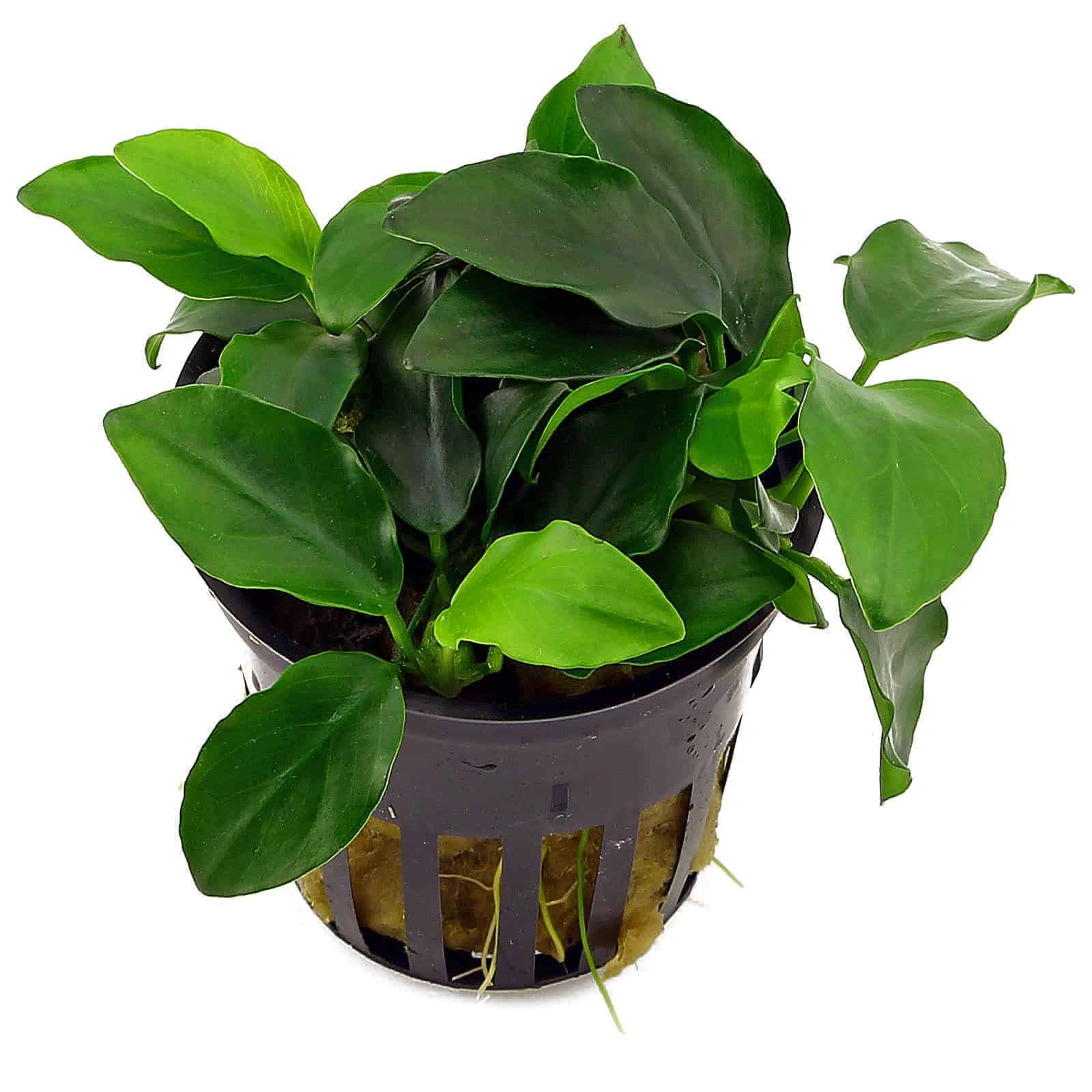
| ORIGINS | West Africa, occurring in Nigeria, Gabon, Ivory Coast, and Cameroon. |
| SIZE | Leaves may be up to 12 in (30 cm) long. |
| WATER | Temperature 72–77°F (22–25°C); hard (100–150 mg/l) and around neutral (pH 6.0–7.5). |
| PROPAGATION | Divide the rhizome and transplant the pieces to different areas of the tank. |
These plants species (Nana and Barteri) are semi-aquatic plants with heart or arrow-shaped bright green leaves. Naturally, they strive in rivers, streams, and marshes of the African jungle. Anubias are small plants can adapt to different water levels and changes in shades.
They attach to driftwood and other objects and need low light. Anubias need little care and are great for beginners.
Java fern (Microsorum Pteropus)
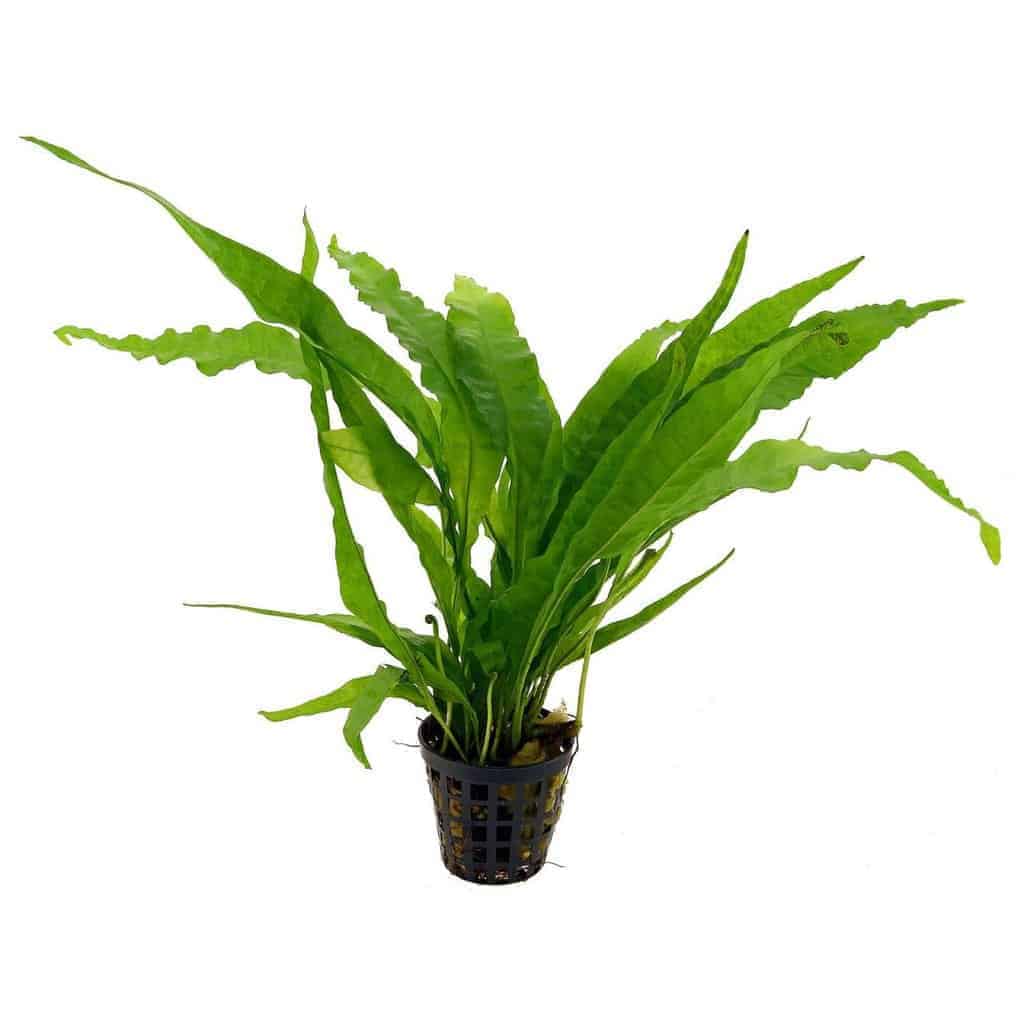
| ORIGINS | Occurs widely throughout Southeast Asia, ranging into southern parts of China. |
| SIZE | Leaves may grow as large as 12 in (30 cm) |
| WATER | Temperature 72–86°F (22–30°C); hard (100–150 mg/l) and around neutral (pH 6.5–7.8) |
| PROPAGATION | Divide mature specimens, or remove the tiny plantlets that form on older leaves. |
Java fern is a good choice for your aquarium plants needs. Java fern has six species with different leave shapes and strives in low light. They grow slowly and gradually in aquariums. Also, Java fern can grow up to 12 to 14 inches in height and 6 inches in width. Their leaves vary in length and width with some having wide, branching and long leaves.
In their natural habitat, Java ferns grow on rocks and edges of waterfalls and rivers. However, they grow well when attached to the bottom of aquariums by gravel or other objects.
Vallisneria
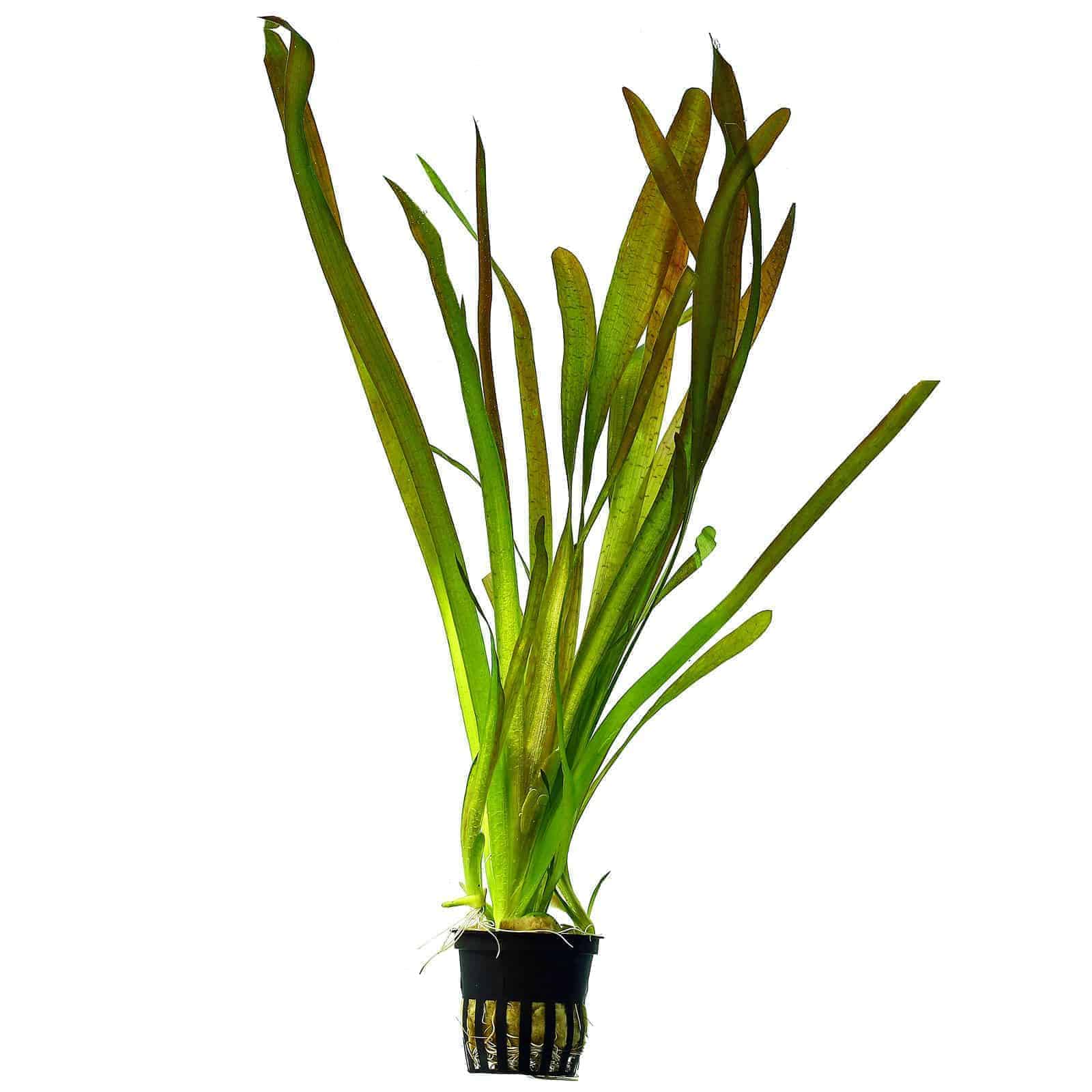
| ORIGINS | Probably southern Europe. Now occurs widely in tropical and subtropical localities. |
| SIZE | Leaves typically measure up to 8 in (20 cm) long. |
| WATER | Temperature 72–82°F (22–28°C); hard (100–150 mg/l) and around neutral (pH 6.5–7.5). |
| PROPAGATION | Split off the runners produced by established plants. |
Vallisneria is a flowering plant that grows underwater. It attaches itself to surfaces with its runners. Usually, it forms large leaves from its root that shade other plants. Next, their leaves have round tips and raised veins which make them easy to identify.
Also called Eelgrass, Vallisneria can help beautify your aquarium. To get the best results with Vallisneria, place them attached back or side of your aquarium. At this position, it creates a lovely frame for your aquarium.
Indeed, they adapt well to low light and grows slowly. Once they establish in the aquarium, the female flower grows out of the aquarium on top of a long stalk. Conversely, the male flower grows out on a shorter stalk, and float in the aquarium. In addition, the male and female flowers produce capsules that look like banana bearing tiny seed.
Pros and cons of plants with low light requirements
Keeping and caring for those tiny fishes is a fulfilling and rewarding hobby. However, before you begin to read our pro and cons of low light plants.
Pros
• Biological filter – water quality is an important part of fish keeping. These plants, filter aquarium water naturally, you can use them instead of a mechanical filter.
• Aeration – low light plants produce their food with photosynthesis. This gives off natural oxygen for fishes. Moreover, oxygen from various low light plants in one aquarium is efficient than air-stones.
• Enhance appearance – These plants create realistic habitats for plants. Also, it beautifies your aquarium which changes as the plants grow.
Cons
• Expensive – maintaining and caring for these plants is expensive. To make sure they survive, you need to buy the right lightning, liquid fertilizer, and bio available organic carbon.
• Preparation – new plants must be sterilized before you introduce them into your aquarium. Quarantine takes up to two weeks to ensure snail eggs or snails do not get into your aquarium.
• Constant maintenance – most of these plants grow rapidly. Also, they grow in low light and need consistent trimming to avoid overgrowth. Also, dead plants must be identified early and removed immediately.
Conclusion
Finally, adding low light plants to your aquarium will benefit your fishes and earn you compliments. However, it’s best to buy your plants from a verified source to avoid polluting your aquarium. Pick your preferred plants from our list and prepare it before adding these plants.
Anubias Plant Care

Hi, my name is Sean, and I’m the primary writer on the site. I’m blogging mostly about freshwater and saltwater aquariums, fish, invertebrates, and plants. I’m experienced in the fishkeeping hobby for many years. Over the years I have kept many tanks, and have recently begun getting more serious in wanting to become a professional aquarist. All my knowledge comes from experience and reading forums and a lot of informative sites. In pursuit of becoming a professional, I also want to inspire as many people as I can to pick up this hobby and keep the public interest growing.
Read more about Sean.
Please join also my Facebook group.

